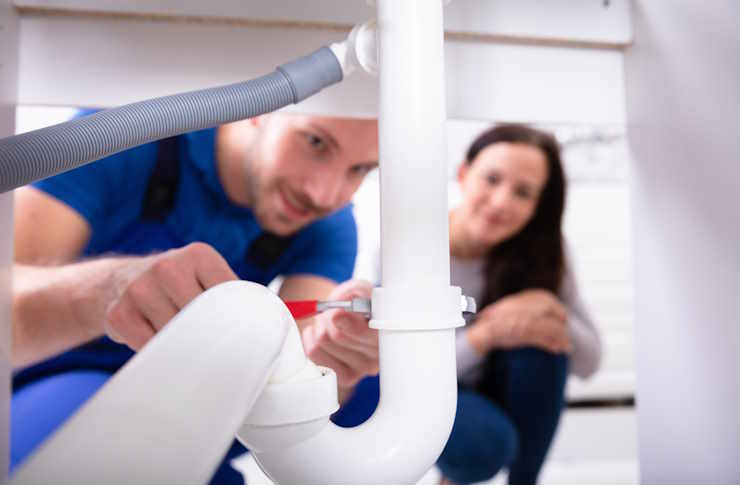The Ultimate Guide to Sheet Vinyl Flooring: What It Is, Why It's Better, and How to Choose
Choosing new flooring can feel overwhelming. You want something beautiful, durable and affordable - but does it really exist? It’s time to take a closer look at modern vinyl planks. The answer is yes. Modern vinyl planks are a popular choice for homes and businesses because they are affordable, durable, and beautiful. By 2025, innovative technologies will further increase its longevity and versatility, making it ideal for high-traffic areas such as kitchens and bathrooms. Roll vinyl (PVC) flooring is easy to maintain and comes in a variety of designs, allowing you to enhance the style of your interior on a budget. Discover the best vinyl (PVC) roll flooring solutions for the perfect blend of style and functionality in your space.

Modern sheet vinyl flooring is a single, continuous roll of resilient material designed to cover rooms with minimal seams. Thanks to advances in backing construction, print technology, and protective wear layers, it now offers convincing stone and wood effects, cushioned comfort, and robust resistance to everyday wear. For households balancing style, practicality, and budget, it’s a versatile option that works across kitchens, bathrooms, utility spaces, and living areas.
Benefits of modern sheet vinyl flooring
Today’s sheet vinyl combines comfort, resilience, and visual realism. Textile or fibreglass backings keep the floor dimensionally stable, while cushioned layers soften footsteps and help dampen sound—useful in flats and busy family homes. The transparent wear layer protects against scuffs and staining, and many finishes include slip-resistance textures for added safety. Because sheets cover large areas, there are fewer seams than with tiles or planks, reducing dirt traps and simplifying cleaning with routine sweeping and occasional damp mopping.
Waterproof and durable flooring for homes
Most residential sheet vinyl is functionally waterproof at the surface, making it well suited to kitchens, bathrooms, and utility rooms. Durability depends on wear-layer thickness and product build: a thicker wear layer (for example, 0.3–0.4 mm) generally offers better abrasion resistance for high-traffic spaces. Many products are compatible with underfloor heating when installed per manufacturer guidance (often up to 27°C). As with any flooring, long-term performance depends on subfloor preparation: a smooth, dry, level base helps prevent telegraphing of imperfections and supports adhesive bond where required.
How to choose sheet vinyl for your home
Start with room use. For wet areas, look for products marketed for bathrooms and kitchens, often with enhanced slip resistance. For living rooms and bedrooms, cushioned and textile-backed options add comfort underfoot and reduce noise. Next, review the wear layer and overall thickness; thicker isn’t always better, but a robust wear layer is a good indicator of protection in busy households. Check warranty terms, stain and scratch resistance claims, and compatibility with your subfloor and heating system.
Design also matters. If you’re pairing with existing cabinetry or skirting, order samples to confirm colour and pattern scale in natural light. Consider plank or tile pattern direction in long rooms to emphasise length, or use larger tile designs in small spaces to reduce visual seams. Finally, think ahead about installation: loose-lay methods may be suitable for small rooms, while larger rooms often require full-stick adhesives and professional fitting, especially where seams must be heat-welded or tightly butted for a nearly continuous look.
Affordable luxury vinyl flooring options
For many UK households, cost is a key factor. Material prices for sheet vinyl typically span from budget options to premium cushioned or safety floors. As a broad guide, materials may range roughly £10–£40 per m² depending on thickness, backing, and brand. Professional fitting adds labour, adhesives, and preparation—often £15–£35 per m²—especially if plywood overlay or smoothing compound is required to create a level surface. Below are example products and indicative UK retail price ranges to help you benchmark. Actual prices vary by retailer, room size, and subfloor condition.
| Product/Service | Provider | Cost Estimation |
|---|---|---|
| Novilon (residential sheet vinyl) | Forbo | Materials ~£20–£35 per m²; installed total commonly ~£35–£60 per m² |
| Secura (cushioned vinyl) | Polyflor | Materials ~£18–£32 per m²; installed total commonly ~£33–£60 per m² |
| Griptex/Texline (textile-backed vinyl) | Gerflor | Materials ~£18–£30 per m²; installed total commonly ~£33–£58 per m² |
| Leoline ranges (residential sheet vinyl) | IVC | Materials ~£12–£28 per m²; installed total commonly ~£28–£55 per m² |
| Cushion vinyl collections | Beauflor | Materials ~£15–£30 per m²; installed total commonly ~£30–£58 per m² |
Prices, rates, or cost estimates mentioned in this article are based on the latest available information but may change over time. Independent research is advised before making financial decisions.
2025 sheet vinyl design trends
In 2025, expect more nature-inspired palettes—warm oaks, mid-tone walnuts, and limestone looks with subtle veining. Matte, low-sheen finishes remain popular for a more authentic feel underfoot. Wider “plank” prints and large-format “tiles” help reduce visual repetition, while textile-backed constructions support comfort and acoustic performance in multi-storey homes. There’s continued interest in pattern—herringbone effects, heritage encaustic motifs, and terrazzo-inspired visuals—balanced by a move toward quieter, more liveable neutrals suited to varied interiors.
A careful balance of realistic design, appropriate wear layer, and solid subfloor preparation is the foundation of a long-lasting installation. With modern manufacturing delivering waterproof surfaces, stable backings, and refined textures, sheet vinyl can provide a practical, comfortable floor that aligns with both functional needs and evolving interior trends across UK homes.



